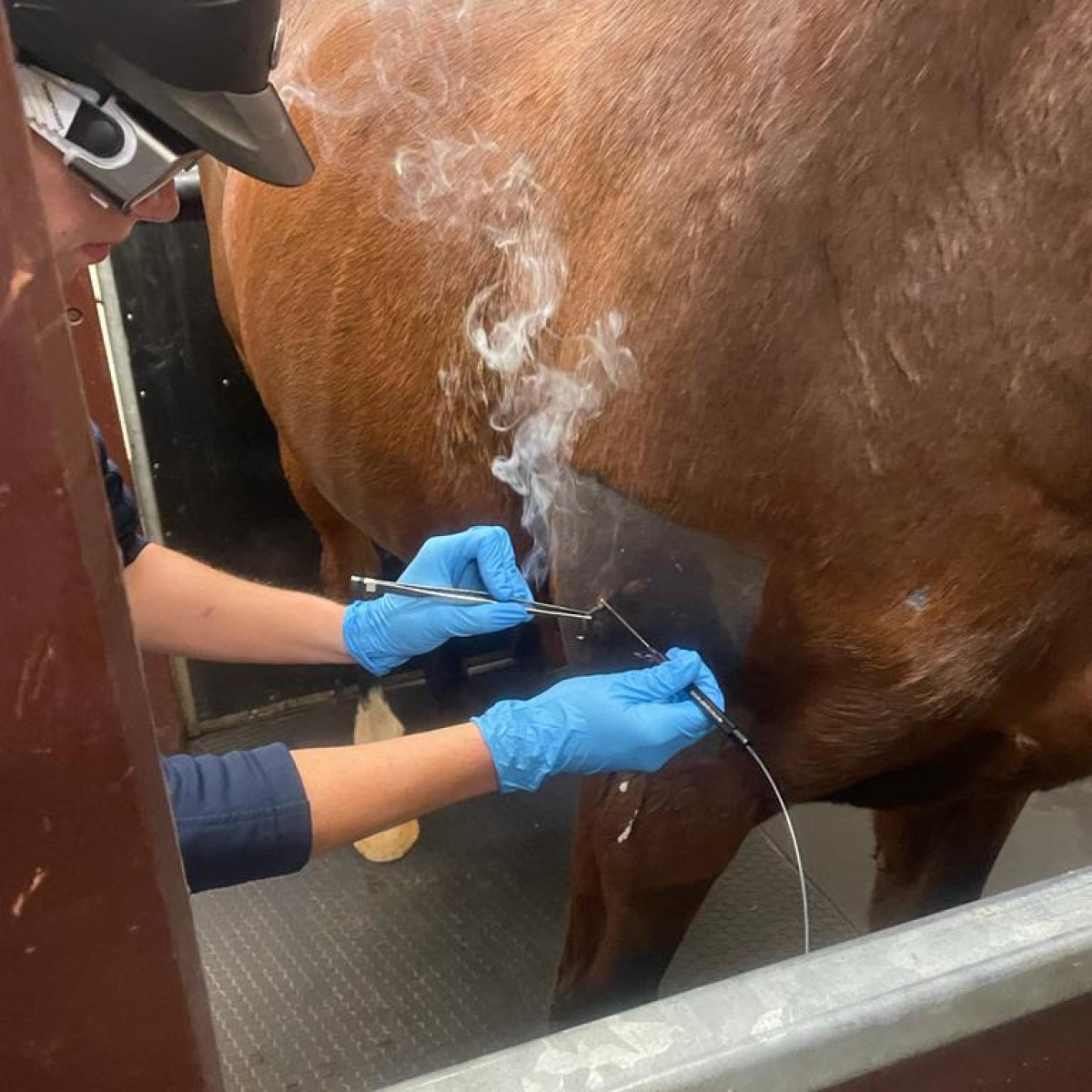Equine Therapy: Exactly How It Assists Build Self-confidence and Emotional Strength
Equine Therapy: Exactly How It Assists Build Self-confidence and Emotional Strength
Blog Article
Examining the Effectiveness of Laser Therapy in Horse Treatment for Injury Rehab
The evaluation of laser therapy's performance in equine injury rehabilitation depends upon numerous factors, consisting of recuperation time, pain reduction, and cells regeneration. Scientific studies suggest significant improvements in problems like tendonitis and osteoarthritis, credited to boosted mobile function and elevated ATP production. Vets regularly observe superior results with laser treatment contrasted to standard approaches, positioning it as a vital component in equine care. However, the necessity for constant tracking and tailored therapy strategies can not be overemphasized. What certain scientific proof sustains these cases, and just how do vets apply these methods in technique?
Comprehending Laser Therapy
Laser therapy has actually come to be an essential tool in veterinary medication, specifically in the treatment of equine conditions. Recognized for its non-invasive nature and efficiency, laser therapy involves the application of specific wavelengths of light to stimulate cells repair service and decrease inflammation. This healing technique is increasingly preferred for its capability to accelerate the recovery process in horses experiencing a selection of bone and joint injuries and persistent conditions.
The key system behind laser treatment is its ability to improve mobile functions. When laser light passes through the skin, it is soaked up by mitochondria, the powerhouse of cells, which brings about increased production of adenosine triphosphate (ATP) This biochemical power boost facilitates cellular fixing and regeneration. Furthermore, laser treatment promotes vasodilation, enhancing blood circulation and oxygen delivery to damaged cells, hence speeding up healing.
In equine medicine, laser treatment is specifically advantageous for conditions such as tendonitis, osteo arthritis, and injury recovery. The strategy is admired for its pain-relieving buildings, allowing horses to restore movement and feature more swiftly. Vets also appreciate its minimal adverse effects compared to other therapy methods, making it a reputable and risk-free choice for equine treatment.

How Laser Treatment Works

Upon absorption, these photons set off a collection of biochemical adjustments, improving mitochondrial function and bring about boosted adenosine triphosphate (ATP) production. This surge in ATP speeds up cellular metabolic rate, promoting tissue fixing and regeneration. In addition, laser treatment modulates inflammatory feedbacks by impacting cytokine degrees and minimizing oxidative stress, therefore easing pain and swelling.
An additional considerable facet of laser therapy is its duty in improving microcirculation. The treatment promotes vasodilation, boosting blood flow and oxygen shipment to damaged cells (Equine Therapy). This helps with the elimination of cellular particles and sustains the expansion of fibroblasts and collagen synthesis, critical for wound recovery
Clinical Proof
The effectiveness of laser treatment in equine treatment has been confirmed with different scientific research studies, showcasing its healing possible throughout a variety of conditions. A research study carried out by Turner et al. (2012) demonstrated that horses treated with low-level laser therapy (LLLT) for ligament injuries showed increased healing compared to those obtaining standard therapies.
In a similar way, research by Johnson and coworkers (2015) focused on equine muscular tissue injuries, exposing that laser treatment considerably accelerated muscle fiber regrowth and reduced muscular tissue stiffness. Scientific assessments have actually revealed that laser therapy can relieve chronic problems such as osteoarthritis.
Veterinarian Insights

Vets likewise appreciate the versatility of laser therapy. She aims out that laser treatment can be tailored to the particular needs of each steed, making sure ideal outcomes.
Moreover, vets value the capability to integrate laser treatment with other treatment methods. This multimodal method can enhance total therapy efficiency, supplying an extensive option for equine rehab. Such recommendations from seasoned specialists highlight the growing approval and application of laser therapy in equine medication.
Practical Considerations
A vital element of executing laser therapy in equine therapy involves recognizing the useful factors to consider that ensure its efficiency and safety. Primarily, it right here is important to select the proper laser device, as different kinds differ in wavelength, power, and infiltration depth. Equine Therapy. Veterinarians need to be well-versed in these specifications to customize treatment procedures properly per injury type
Additionally, the regularity and duration of laser therapy sessions require careful planning to take full advantage of healing benefits while lessening any kind of potential unfavorable impacts. Regular monitoring of the steed's response to treatment can direct essential changes in the therapy regimen. Establishing a risk-free and regulated setting throughout treatments is also necessary to stop unintended exposure to laser discharges, link which might damage both the steed and the trainer.
Educating and certification of personnel administering laser therapy are critical to guarantee appropriate method and to support security requirements. Furthermore, maintaining accurate records of each session, consisting of laser setups and observed end results, is essential for reviewing the total performance of the therapy and for making data-driven decisions.
Conclusion
Laser treatment has arised as an efficient modality in equine injury recovery, providing significant benefits in recovery time, discomfort relief, and cells healing. For optimal outcomes, continuous tracking and individualized go to this site therapy protocols stay important in leveraging the complete potential of laser treatment in equine treatment.
Report this page